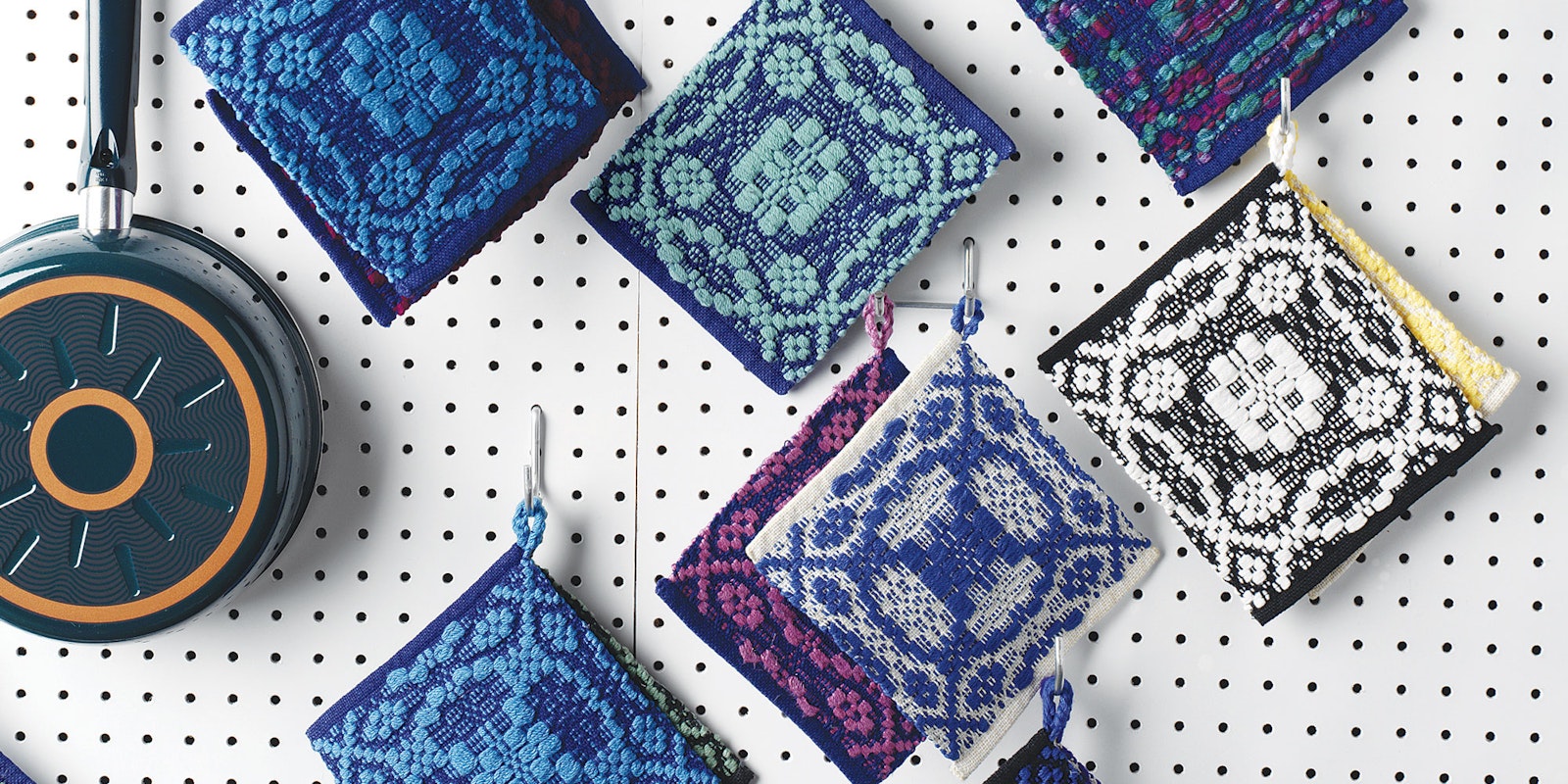As winter approaches and many of us are still staying home due to the pandemic, projects like potholders woven on a simple peg loom can feel enticing. Read on for a short history of the pinloom.- Susan
Many of us have fond childhood memories of happy hours spent weaving potholders with colorful loops of stretchy fabric on a little square peg loom. But potholder looms didn’t start out as toys. They were invented as a way for sock factories to use up waste cut from socks and hosiery during the manufacturing process. The looms were packaged with the waste fabric "loopers" and sold to Depression-era housewives who used the kits to make potholders and hot pads.
Over time, the potholder loom became more popular with children than their mothers, and by the 1950's, it was seen mainly as a toy. But in recent years, talented adult weavers have reclaimed the humble potholder loom as a valuable weaving tool. Check out Noreen Crone-Findlay's great video tutorials on stretching the boundaries of these little looms, and take a look at this article where Syne Mitchell shows how potholder looms make a great tool for experimenting with color effects.
If you want to play with color-and-weave and design log cabin or pinwheels, or even your own plaids check out this fun (and free) design program from Harrisville yarns. Before you know it you'll be graduating from weaving loop potholders and you'll be designing and weaving overshot potholders like the ones in the top photo by Jean Korus!
Originally published January 15th, 2016. Updated November 6, 2020.

